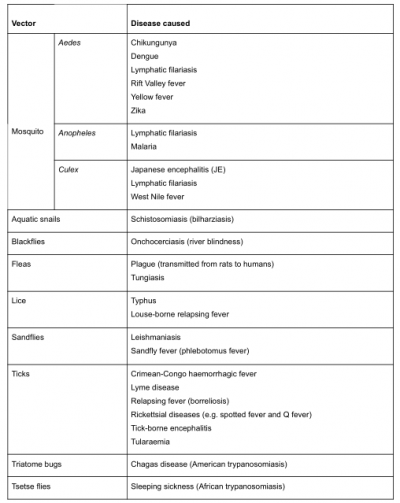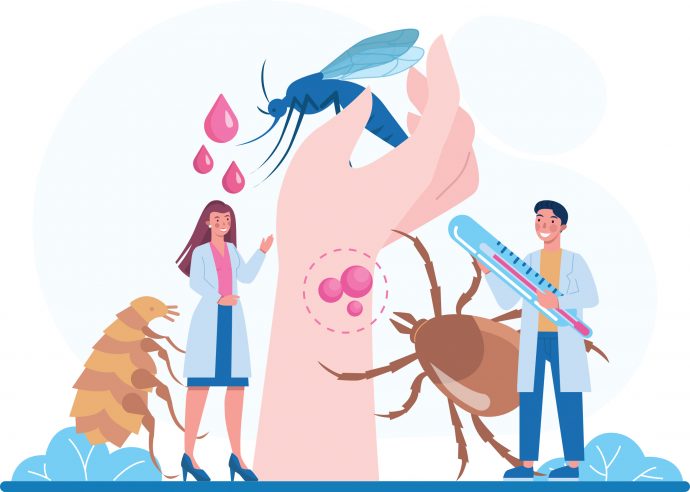Some of us may be familiar with the mosquito fogging that is occasionally conducted by the authorities around our neighbourhood. This is one of the preventive methods to prevent vector-borne diseases spread by mosquitoes. Let’s learn more about vector-borne diseases!
Vector-borne diseases (VBDs) are a type of communicable disease caused by parasites, viruses or bacteria that are transmitted by vectors. More than 17% of all infectious diseases are due to vector-borne diseases, which cause more than 700,000 deaths annually. Some VBDs, such as dengue and Japanese encephalitis (JE), are endemic in our country as proven by the annual cases and deaths. For example, 9 JE cases with 1 death were reported in Malaysia during the first half of 2020. Meanwhile, more than 20,000 dengue cases have been reported in Malaysia this year as of October.
What is a vector?
Vectors are living organisms that can transmit infectious pathogens between humans, or from animals to humans. Typically, they consist of insects or other arthropods, which consume pathogen-containing blood from an infected host (human or animal) and later transmit the pathogen into a new host.
Examples of vectors and diseases

What leads to the prevalence of VBDs?
Around 80% of VBD cases typically happen among 20% of the host population, mostly in developing countries located in tropical and subtropical regions and among the poorer populations. Various factors contribute to the rise of VBD cases, particularly those that allow and promote these vectors to thrive in the environment and be exposed to human.
The process of urbanisation and other human factors are among the main drivers of VBD emergence and prevalence. Human population growth necessitates the expansion of residential and agricultural land, thus pathogens may spill over from natural environments into new hosts due to an increased host-vector exposure.
Other factors linked to urbanisation include inadequate housing as well as poorly designed irrigation and water systems. The rapid expansion of global trade and transportation is also a major factor. Apart from that, environmental factors such as climate change, loss of biodiversity, deforestation and other types of disruption to the ecosystem have also been identified as part of the problem.
How can we mitigate the problem?
One of the main strategies to tackle VBDs is through the control of disease vector populations. This can be achieved via environmental management to reduce and eliminate vector breeding grounds, for example by removing standing water where mosquitoes lay eggs.
In addition, biological and chemical controls such as with bacterial larvicides, larva-eating fish, indoor sprays, fogging as well as chemical pesticides are among the more common methods applied currently. Another approach is to use personal protection and preventive methods such as insecticide-treated bed nets and door/window screens at home, or by wearing long sleeves and using insect repellent when going outside.
Vaccination should also be part of the solution. Currently, only 2 VBD vaccines are available in Malaysia: JE and yellow fever vaccines. In Malaysia, JE vaccine is provided as part of the national immunisation programme for children in Sarawak. Meanwhile, yellow fever vaccine is recommended for those who are travelling to countries with a high risk of yellow fever transmission. A dengue vaccine is available, though not in Malaysia, and a few others will be available soon. Meanwhile, vaccines against malaria are currently being assessed in some countries.
The prevalence of VBDs is linked to various human and environmental factors, especially due to unsustainable development and disruption to the ecosystem. Improvements at policy level are necessary to address the issue in the long term. At the ground level, an integrated programme with vector reduction and immunisation will be more effective and sustainable in making sure that you and your family are healthy and safe from VBD threats.






Comments